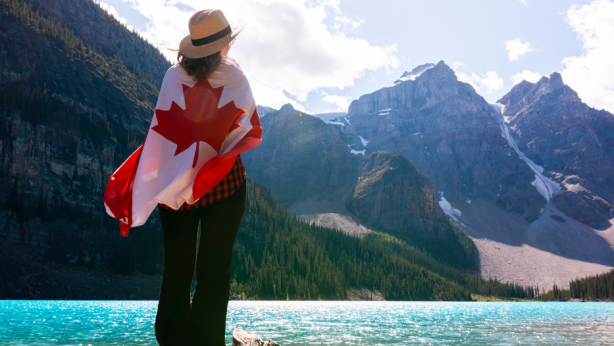How to Enjoy Outdoor Activities in Canada (step-by-step guide)

**Please review the disclaimer at the end of this document before reading or using this guide.
Canada is renowned for its breathtaking natural beauty and diverse landscapes, making it a paradise for outdoor enthusiasts. From rugged mountains and pristine lakes to vast forests and scenic coastlines, Canada offers endless opportunities for outdoor activities year-round. As a new immigrant, exploring these outdoor activities can help you connect with nature, stay active, and experience Canadian culture. This guide provides information on how to enjoy outdoor activities in Canada.
Step 1: Explore Seasonal Outdoor Activities
- Winter Activities:
- Skiing and Snowboarding: Canada is home to some of the world’s best ski resorts, including Whistler Blackcomb in British Columbia, Banff and Lake Louise in Alberta, and Mont-Tremblant in Quebec. Whether you’re a beginner or an experienced skier, there are slopes for all skill levels.
- Ice Skating: Enjoy skating on outdoor rinks in cities like Ottawa (Rideau Canal), Toronto (Nathan Phillips Square), and Montreal (Old Port). Many communities also have local rinks that are open to the public.
- Snowshoeing: Explore snowy trails and forests on snowshoes, a great way to experience winter landscapes without needing skiing skills.
- Winter Hiking: Some trails are accessible year-round for winter hiking. Wear appropriate gear and consider using trekking poles for stability.
- Spring Activities:
- Hiking and Walking: As the snow melts and flowers bloom, spring is a wonderful time to explore Canada’s hiking trails. Popular destinations include the Bruce Trail in Ontario, Cape Breton Highlands in Nova Scotia, and Pacific Rim National Park in British Columbia.
- Bird Watching: Spring is a prime time for bird watching, as many species migrate north. Visit parks and nature reserves to spot birds like the Canadian goose, bald eagle, and warblers.
- Fishing: Freshwater fishing is popular in Canada, with opportunities to catch trout, bass, and pike in lakes and rivers. Ensure you have the necessary fishing license, which varies by province.
- Summer Activities:
- Camping: Experience Canada’s wilderness by camping in national and provincial parks. Sites like Jasper National Park (Alberta), Fundy National Park (New Brunswick), and Gros Morne National Park (Newfoundland) offer stunning views and amenities for campers.
- Canoeing and Kayaking: Paddle through serene lakes, rivers, and coastal waters. Popular spots include Algonquin Provincial Park in Ontario, the Bowron Lake Circuit in British Columbia, and the Bay of Fundy in Nova Scotia.
- Cycling: Enjoy scenic bike rides on trails like the Confederation Trail in Prince Edward Island, the Galloping Goose Trail in British Columbia, and the Waterfront Trail in Ontario.
- Beach Activities: Canada has beautiful beaches, such as Wasaga Beach (Ontario), Long Beach (British Columbia), and Cavendish Beach (Prince Edward Island), where you can swim, sunbathe, or play beach volleyball.
- Fall Activities:
- Leaf Peeping: Fall foliage is a spectacular sight in Canada. Drive or hike through areas like Algonquin Park (Ontario), Cape Breton (Nova Scotia), and Gatineau Park (Quebec) to witness the vibrant colors.
- Apple Picking: Visit local orchards for apple picking, a fun family activity that also supports local farmers. Quebec, Ontario, and British Columbia have many orchards open to the public.
- Harvest Festivals: Participate in fall harvest festivals that celebrate the season with local food, crafts, and entertainment. Events like the Fall Okanagan Wine Festival (British Columbia) and the Pumpkinferno (Ontario) are popular.
Step 2: Equip Yourself for Outdoor Adventures
- Clothing and Gear:
- Layering: Canada’s weather can be unpredictable, so dress in layers that you can add or remove as needed. Base layers, insulating layers, and waterproof outer layers are essential.
- Footwear: Invest in quality hiking boots, winter boots, or water shoes depending on the activity. Comfortable and supportive footwear is key for enjoying outdoor activities.
- Accessories: Bring along hats, gloves, sunglasses, and sunscreen to protect yourself from the elements. For winter activities, thermal accessories like scarves and earmuffs are important.
- Safety Equipment:
- Navigation Tools: Use maps, GPS devices, or smartphone apps to navigate trails and parks. Always carry a physical map as a backup.
- Emergency Kit: Pack a basic emergency kit with items like a first aid kit, flashlight, multi-tool, whistle, and matches. This is essential for longer trips or remote areas.
- Bear Safety: If you’re in bear country, carry bear spray and know how to use it. Store food securely to avoid attracting wildlife.
- Outdoor Passes and Permits:
- Parks Canada Discovery Pass: If you plan to visit multiple national parks, consider purchasing a Discovery Pass, which provides unlimited access to over 80 national parks and historic sites for a year.
- Provincial Park Permits: Each province may have its own park permits or fees, so check the requirements before visiting.
- Fishing and Hunting Licenses: If you plan to fish or hunt, ensure you have the appropriate licenses, which vary by province and activity.
Step 3: Learn About Outdoor Etiquette and Conservation
- Leave No Trace:
- Follow the Leave No Trace principles to minimize your impact on the environment. This includes packing out all trash, staying on marked trails, and respecting wildlife.
- Respect Local Regulations:
- Adhere to park rules and regulations, such as campsite restrictions, fire bans, and designated trails. This helps protect natural habitats and ensures a safe experience for everyone.
- Wildlife Safety:
- Observe wildlife from a distance and never feed animals. Familiarize yourself with safety practices for encounters with animals like bears, moose, and coyotes.
Step 4: Participate in Guided Tours and Outdoor Programs
- Guided Tours:
- If you’re new to outdoor activities, consider joining guided tours or group excursions. Many national and provincial parks offer guided hikes, canoe trips, and wildlife tours.
- Outdoor Clubs and Groups:
- Join local outdoor clubs or groups to meet like-minded people and participate in organized activities. Organizations like the Alpine Club of Canada and Hike Ontario offer events and trips for various skill levels.
- Educational Programs:
- Parks Canada and provincial parks often offer educational programs about local ecosystems, wildlife, and conservation efforts. These programs are great for learning more about Canada’s natural environment.
Step 5: Explore Accessible Outdoor Activities
- Accessible Trails:
- Many parks have accessible trails designed for people with mobility challenges. These trails are often paved or have boardwalks, making them suitable for wheelchairs and strollers.
- Adaptive Sports:
- Canada offers adaptive sports programs for people with disabilities, including skiing, kayaking, and cycling. Organizations like the Canadian Paralympic Committee and local adaptive sports clubs can help you find activities.
- Urban Green Spaces:
- If you live in a city, explore urban parks and green spaces that offer walking paths, playgrounds, and picnic areas. Cities like Toronto, Vancouver, and Montreal have extensive park systems.
Additional Tips for New Immigrants
- Check the Weather:
- Always check the weather forecast before heading out. Canadian weather can change rapidly, so be prepared for varying conditions.
- Know Your Limits:
- Start with activities that match your fitness and experience level. Gradually challenge yourself as you become more comfortable with outdoor pursuits.
- Connect with Local Communities:
- Engage with local outdoor communities through social media, community centers, or meetup groups. This is a great way to get tips, find activity partners, and discover new places.
- Plan for Wildlife Encounters:
- Learn how to stay safe in areas where wildlife is common. Carry bear spray in areas with bears, and know how to react if you encounter wildlife on trails.
Canada offers an incredible range of outdoor activities that allow new immigrants to experience the country’s natural beauty and diverse landscapes. By understanding the seasonal activities available, equipping yourself with the right gear, practicing outdoor etiquette, and participating in guided tours or community programs, you can fully enjoy Canada’s great outdoors. Welcome to Canada, and may your outdoor adventures be safe, enjoyable, and memorable!
**DISCLAIMER: This document was prepared based on information gathered from various online sources. While our aim is to provide accurate and helpful information to newcomers in Canada, Active Action cannot be held responsible for any actions, outcomes, or situations that may arise from the use of this document. We strongly recommend that you verify any details with official sources or relevant authorities if you have any doubts or uncertainties about any information provided in this document. If you have any specific questions about the information in this document, or if you notice any inaccuracies or missing information, please inform us immediately through the contact form. We will respond to you as soon as possible and/or update the information as necessary.


